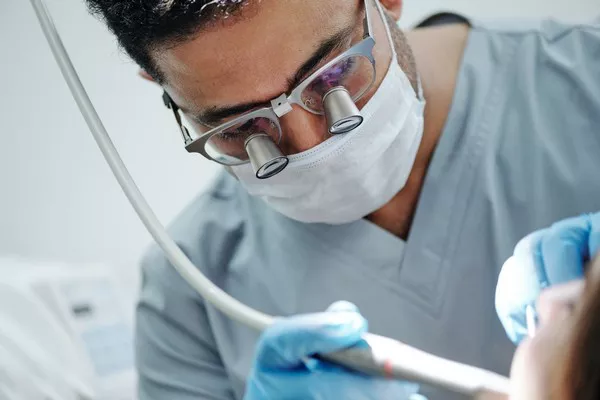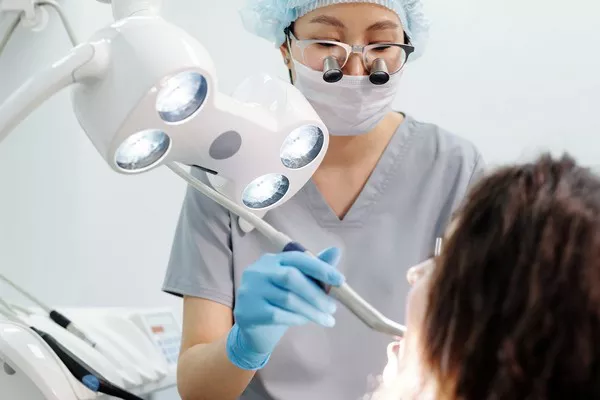Tooth discoloration can be a cause for concern and can have a significant impact on your smile’s aesthetics and self-confidence. It is not uncommon to notice that one tooth appears noticeably yellow compared to the others, creating an uneven appearance. Understanding the potential causes behind this isolated tooth discoloration is essential for determining the appropriate treatment options. In this article, we will explore various factors that can contribute to the yellowing of a single tooth, ranging from extrinsic stains to underlying dental conditions.
Extrinsic Stains
Extrinsic stains are those that occur on the outer surface of the tooth enamel. They are typically caused by external factors, such as dietary habits or lifestyle choices. Certain foods and beverages with intense pigmentation, like coffee, tea, red wine, and dark-colored fruits, can leave stains on the teeth when consumed regularly. Poor oral hygiene practices, such as inadequate brushing and flossing, can also lead to plaque and tartar buildup, resulting in yellowish discoloration. It is possible for one tooth to accumulate more stains than the others due to variations in chewing patterns or specific habits like tobacco use.
Tooth Trauma or Injury
A yellowed tooth may be the result of trauma or injury in the past. Physical impact or forceful contact with an object can damage the tooth structure and disrupt the blood supply to the affected tooth. This can lead to internal bleeding, which can cause the tooth to appear yellow or even gray over time. The presence of blood breakdown products within the dentinal tubules—the tiny channels within the tooth—can contribute to the discoloration of the affected tooth.
Enamel Hypoplasia
Enamel hypoplasia is a condition where the tooth enamel does not develop fully, resulting in thinner or incomplete enamel. This condition can occur due to various factors, including genetics, malnutrition, systemic illnesses during tooth development, or certain medications taken during childhood. The affected tooth may appear yellow or have pits and grooves on its surface. Enamel hypoplasia can affect one or multiple teeth, leading to isolated discoloration.
Tetracycline Staining
Tetracycline is an antibiotic that, when administered during tooth development, can cause permanent tooth discoloration. It is particularly known for causing gray or yellowish-brown stains that may affect one or more teeth. The severity of tetracycline staining depends on the dosage and duration of exposure during tooth formation. This type of discoloration is challenging to treat with conventional whitening methods and often requires specialized dental procedures or restorations to mask the stains effectively.
Root Canal Treatment
A tooth that has undergone root canal treatment may appear yellowed compared to the surrounding teeth. During a root canal procedure, the infected or damaged pulp within the tooth is removed, and the space is filled with a biocompatible material. This process can cause the tooth to lose its vitality, resulting in a change in color over time. While the tooth can be restored structurally, it may require additional cosmetic treatments—such as internal bleaching or a dental crown—to improve its appearance and match the shade of the adjacent teeth.
Genetic Factors
Genetic factors can play a role in tooth discoloration. Some individuals may have naturally darker or more yellowish teeth due to genetic variations in dentin structure and enamel translucency. These inherited characteristics affect tooth color at the developmental stage and can lead to variations in tooth coloration among different individuals.
Conclusion
The yellowing of a single tooth can be attributed to several factors, including extrinsic stains, tooth trauma or injury, enamel hypoplasia, tetracycline staining, root canal treatment, and genetic factors. Understanding the underlying cause of the isolated discoloration is crucial for determining the appropriate treatment options. In some cases, professional teeth whitening procedures, dental bonding, veneers, or crowns may help improve the appearance of the affected tooth. It is recommended to consult with a dentist who can assess your specific situation and provide personalized treatment recommendations. Maintaining good oral hygiene practices, regular dental check-ups, and avoiding habits that contribute to tooth discoloration can also help prevent and manage yellowing teeth, ensuring a confident and harmonious smile.
Related Topics:































